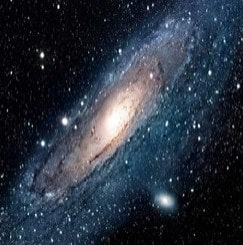Amazing facts on Galaxies

- There are estimated to be over 100 billion galaxies in the observable universe, each containing billions of stars.
- The Milky Way, our own galaxy, is a barred spiral galaxy that is estimated to be around 13.5 billion years old.
- The largest known galaxy, IC 1101, is estimated to be around 6 million light-years across and contains trillions of stars.
- Galaxies can collide and merge, sometimes resulting in the formation of a larger galaxy. The Milky Way is currently in the process of merging with the nearby Andromeda galaxy.
- Active galactic nuclei, or AGN, are regions at the center of some galaxies that emit high-energy radiation and jets of particles. These are thought to be powered by supermassive black holes at the galactic center.
- Some galaxies have a high rate of star formation, resulting in the formation of large numbers of massive, short-lived stars.
- Dwarf galaxies are small, low-mass galaxies that are much less luminous than larger galaxies. They are often used to study galaxy formation and evolution.
- Some galaxies have an irregular shape, with no clear spiral or elliptical structure. These are often the result of recent mergers or interactions with other galaxies.
- The Hubble Ultra-Deep Field, a series of images taken by the Hubble Space Telescope, captured some of the most distant and ancient galaxies ever observed.
- Galaxies can also contain dark matter, an invisible substance that is thought to make up around 27% of the total mass of the universe. The gravitational effects of dark matter can be observed on the distribution of visible matter within a galaxy.
